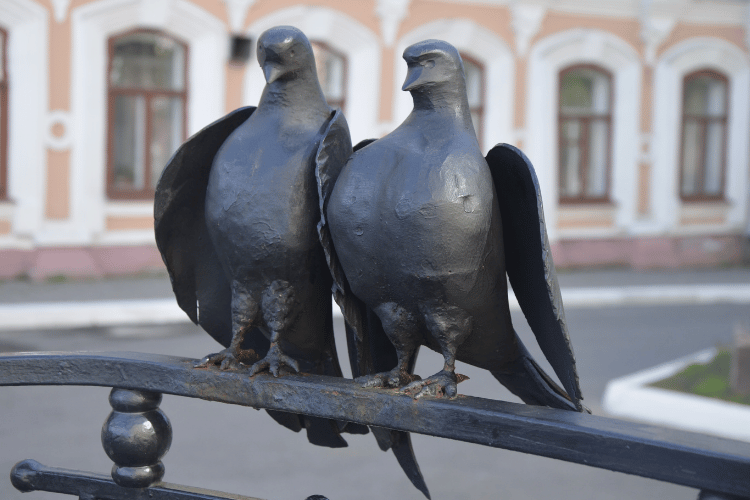
Love is a sensation that helps us live and, in some cases, survive. There are countless methods to show your love, each unique in its own way. We now have numerous examples proving that love may sometimes influence how architecture is developed. Some of them were erected centuries ago, but they are still existing. Here are 10 magnificent monuments created in the name of love, each with its own amazing history.
- Taj Mahal (Delhi)
- Kellie’s Castle (Malaysia)
- Boldt Castle (Newyork)
- Coral Castle (Florida)
- Prasat Hin Phimai (Thailand)
- Torrechiara Castle (Italy)
- Petit Trianon (France)
- Dobroyd Castle (England)
- Thornewood Castle (Washington)
- Mirabell Palace and Garden (Austria)
Top 10 Love Monuments in the world
1. Taj Mahal (Delhi)

The Taj Mahal, the most iconic structure in India, is an everlasting emblem of love. It is a white marble masterpiece of incredible grandeur that reflects the overwhelming richness of a period. The Taj Mahal was created as a memorial for Mumtaz Mahal, his wife who had died during childbirth by Shah Jahan, the fifth Mughal emperor. It is worthy of being listed among the Seven Wonders of the World.
Interesting things to know:
- The Taj Mahal was built over the period of 22 years, started in 1632 and was ended in 1653. The main complex was finished in 1648, followed by the surrounding buildings and gardens completed five years later.
- Over 28 different kinds of precious stones were used to beautify the taj. The construction’s marble stones came from diverse regions and nations.
- The Taj Mahal’s architecture actually expands and depicts the early Mughal styles, which are a combination of Indian, Persian, and Islamic styles.
- It took around 20,000 masons, artisans, and labourers were employed to build this stunning beauty.
- The Taj Mahal’s color varies throughout the day, which is an intriguing feature. It appears pale pink at sunrise, sparkling white in the afternoons, and bronzish-orange in the evenings when the sun sets. The Taj appears light-bluish in the late evenings.
- In the bare crypt located beneath the Taj mahal’s inner chamber, Mumtaz as well as Shahjahan have been buried.
The magnificent structure, one of the top 10 monuments of love that Shah Jahan presented to the world, bears witness to his great love for his wife.
2. Kelli’s castle (Malaysia):
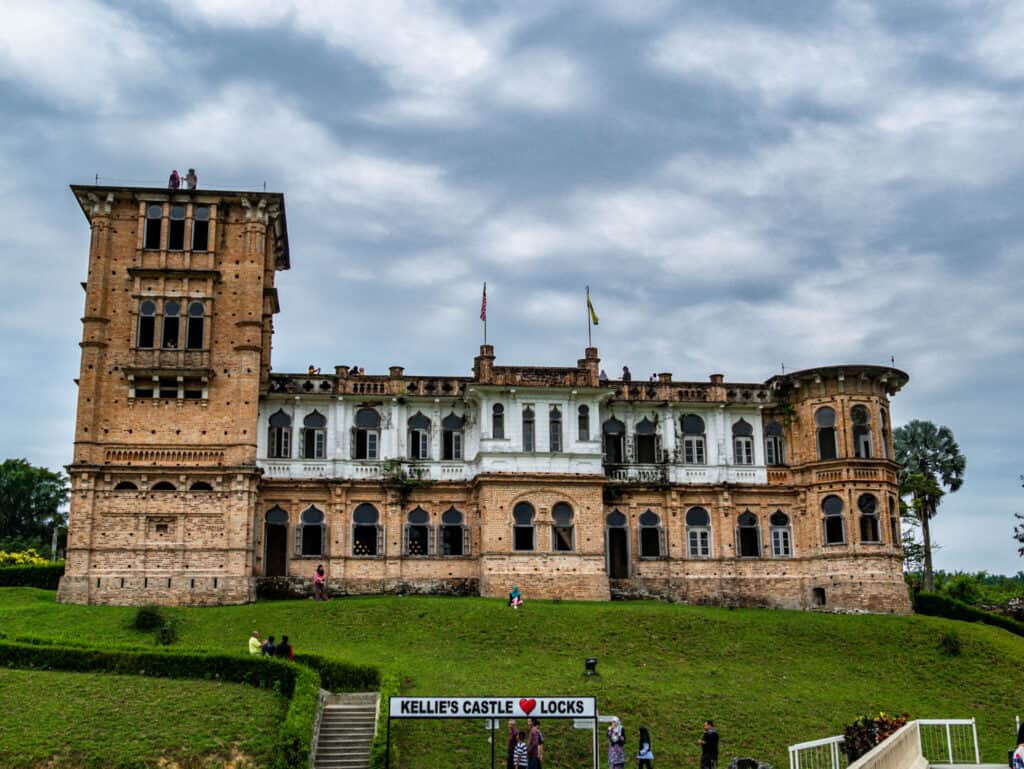
On March 1, 1870, William Smith was born in Elgin, Scotland, and grew up in the nearby village of Dallas as the third of five children in a modest farm-working family. At the age of 21, he chose to leave Scotland and seek his fortune in economically underdeveloped Malaya (now Malaysia).
Kellie’s Castle was built as a memorial to his beloved wife or son and is located near Batu Gajah, Gopeng Road, about 20 mins away from Ipoh, Perak, Malaysia. A Scottish grower named William Kellie Smith built the uncompleted, ruined mansion.
Initially, William started working as a civil engineer, assisting in the road construction in Batu Gajah, near Ipoh, Malaya, where he was hired by an estate owner called Alma Baker to assist in the development of public roadways in South Perak. He constructed the first Kellas Residence, a wooden bungalow.
By 1896, William Smith desired to swap from coffee to rubber, following a string of bad luck and lacked sufficient capital. Then, in 1903, he returned briefly to Scotland to visit his mother’s funeral. He began using his mother’s maiden name, Kellie, who took care of his mother, in regards to plain William Smith out of respect for her.
With a name change brought a transformation in fortune. William encountered Agnes, his future wife. They married soon after returning to Malaya, and their first child, Helen, was brought into the world the following year, in 1904.
Smith constructed his first manor, Kellas House, in 1909 as a symbol of his thriving rubber estate business. Five years later, in 1915, with the birth of a son and Heir Anthony, Smith laid the foundation stone for the second mansion, which proved to be his ultimate folly, combining patterns of Scottish, Moorish, and Tamilvaanan Indian structures, Indo-Saracenic, and Roman influences.
However, tragedy struck during the construction due to World War 1. The Spanish Flu pandemic that swept the world after the war approached Batu Gajah & killed several of the workers on the castle project.
Smith was advised build a temple to stop the disease. Eventually, a temple was constructed 1.5 kilometres away from Kellie’s Castle, and indeed the flu epidemic subsided. In gratefulness, the workers erected a statue of a white man dressed in colonial garb indicating Kellie Smith on the temple’s roof, alongside statues of deities that can still be seen today.
Kellie Smith travelled to the Great Britain to see his wife and son, then to Lisbon, Portugal to grab his elevator, where he became ill with pneumonia and passed away at the age of 56, leaving his family devastated.
The castle was never completed because his family decided to move back to Scotland after his passing. With the flow of time, Kellas House was managed to sell to a British company called Harrisons & Crosfield, and the castle faded into obscurity and became famous love monument in the world.
Interesting things to know:
- To build the castle, 70 tough workers were brought from Madras, India.
- All of the bricks and marble came from India.
- The manor house itself was multi-storey.
- A massive tower is designed.
- For the entertaining complex to host parties, an indoor tennis court and a rooftop courtyard had been installed.
- It includes Malaya’s first elevator.
3. Boldt Castle (New York):
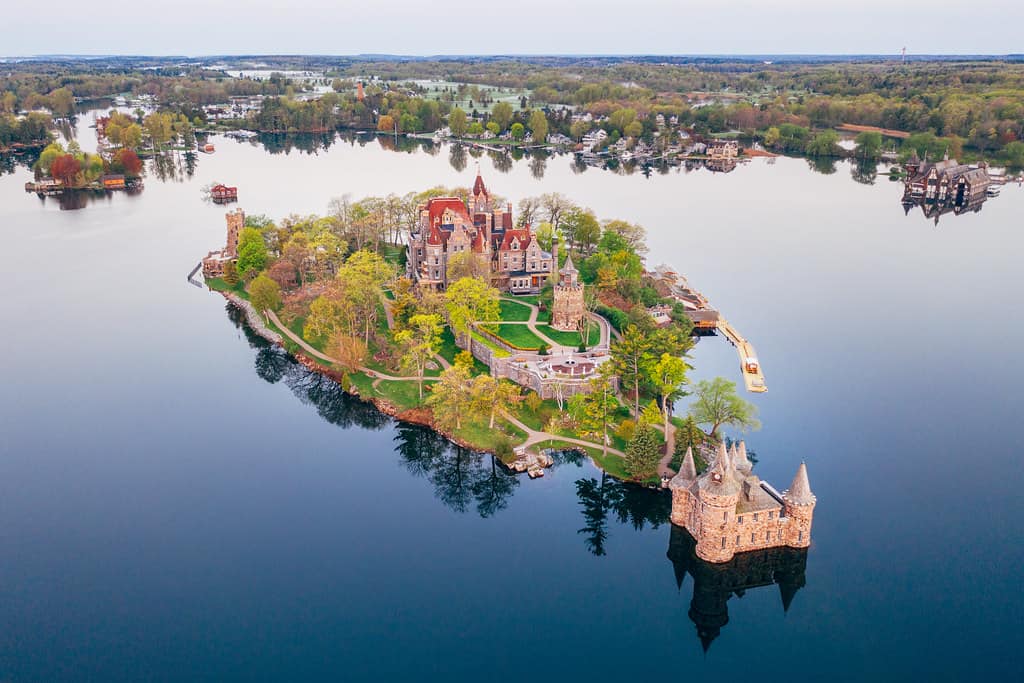
- Boldt Castle is a beautiful abandoned palace on a five-acre private island near New York. The castle, erected on Heart Island, was a testament to undying love until tragedy took it away, and the remains still tell its sorrowful story today. George C. Boldt built this castle in 1900 as a treat for his wife Louise Kehrer Boldt.
- Mr. Boldt, the son of poor parents, was born in a small town in Germany in 1851 and immigrated to America in the 1860s, hoping to make a better life. In New York City, he started his career working in hotel kitchens, and at age 25, he was hired by The Philadelphia Club.
- Then he would meet Louise. They married less than a year later.
- Then, he became the most successful hotel magnate in America as a man of immense business and organizational talent, as well as courage and imagination. He was the owner of the renowned Waldorf Astoria Hotel in New York City, along with the Bellevue-Stratford Hotel in Philadelphia, Pennsylvania.
- During a summer trip, Boldt and his family became in love with the upstate New York region of the Thousand Islands. As a symbol of his love for his wife, Boldt chose to construct a castle on Heart Island.
- Boldt bought an island in 1895 and he put his plan into action in 1899, recruiting over 300 construction workers and artisans to build and design the massive stone castle. On Valentine’s Day 1905, he planned to gift the castle to his beloved Louise.
- Then, in 1904, Louise passed away suddenly. Boldt became so upset that he sent a telegraph to the island’s workers, requesting that they lay down their tools and stop working immediately. He never returned to the island.
- The castle, which was nearly done but not quite finished, stood idle for 73 years. The Thousand Islands Bridge Authority then took over the facility and began repairing it in 1977. The castle is still being restored nearly 40 years and millions of dollars later.
Interesting things to know:
- Boldt changed the island’s original name of Hart Island to Heart Island.
- He had the island itself blasted into the shape of a heart to emphasize the love motif even more.
- The Boldt Castle was designed to resemble a complete Rhineland castle.
- It was decorated with international paintings, sculptures, mosaics, and tapestries.
- The six-story palace contains 120 large rooms. Aside from that, it has tunnels connecting the rooms, a drawbridge, a powerhouse, Italian-style gardens, a children’s playhouse, and a dove cote.
- The castle is currently an interesting wedding venue.
As a result, Boldt Castle has become the most well-liked tourist attractions in New York among the top 10 love monuments.
4. Coral Castle (Florida):

The unusual Coral Castle, located in the Homestead suburbs of Florida, is made completely of oolite limestone and was built entirely by one man. The origin of Coral Castle is still one of Florida’s biggest mysteries. In the 1920s, Edward Leedskalnin, set out to create a castle out of massive stones. If you ever asked him why he built his castle, he’d always say it was for his “Sweet Sixteen.” What is the actual storyline behind this sweet sixteen?
Edward Leedskalnin, a 26-year-old native of Latvia, had plans to marry Agnes Skuvst, 16, and bring her to America in the early 1900s. However, Moments before their wedding, she suddenly called off the engagement. Leedskalnin fled his homeland and settled in southern Florida after being rejected. Then, saddened, Edward planned to start building a memorial to his lost love.
Interesting things to know:
- The Coral Castle at Homestead has been compared to the mysteries and monumental achievements of Egypt’s pyramids, England’s Stonehenge, and India’s Taj Mahal.
- Edward, who stands 5 feet tall and weighs 100 pounds, used his skills to move blocks of Oolitic Limestone (fossilised coral) over 25 feet tall and weighing over 30 tonnes without the need of contemporary building tools or facilities.
- The castle has a castle tower, furniture, and a number of carvings and sculptures.
- He worked on Coral Castle in Florida for 28 years.
The Coral Castle, forever carved in stone, defines Ed’s unending love for his “Sweet Sixteen” and will continue to amaze Coral Castle visitors.
5. Prasat Hin Phimai (Thailand):

The Prasat Hin Phimai is among Thailand’s most impressive Khmer historical sites. Phimai was an important town during the Khmer Empire, a prominent Southeast Asian empire, and was built in the 11th and 12th centuries AD. Prasat Hin Phimai gives mystical and long-lasting love and tragedy.
There was once a Prince by the name of Pajitt. He was the son of the King of Brombana province and had reached the age at which his father expected him to marry. As a result, Prince Pajitt spent months travelling over the countryside. Then he came across a pregnant light-skinned woman.
Pajitt felt he would met his mate; he couldn’t marry the widow, so he decided to marry Orapima, the unborn child, when she reached the age of 16. They both fell completely in love with one other as she grew. Before he could marry Orapima, he had to return to the King and pay the wedding money to her mother. When Orapima was kidnapped, Pajitt rescued her.
Tragically, Pajitt was murdered in the forest by a woodsman. Orapima exacted revenge on her husband’s murderer before returning to her hometown of Phimai, where she built the sanctuary, Prasat Hin Phimai. It was built by painting and sculpting scenes from her time with Pajitt.
The happy ending to this story is that Orapima had a rule requiring that anyone who cried after viewing her artworks be taken before her. This happened one day when Orapima recognised her husband’s spirit in the man in front of her and married and lived happily ever after.
6. Torrechiara Castle (Italy):
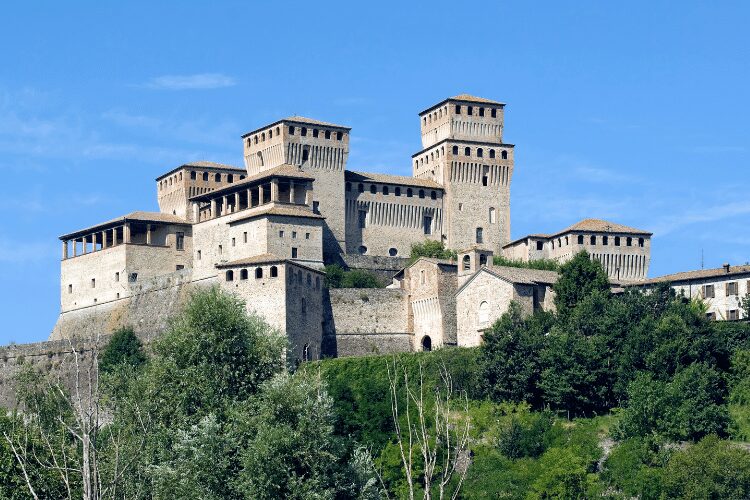
Torrechiara Castle is one of Italy’s most important and well-preserved examples of castle building. The massive Castle of Torrechiara took more than a decade to build, from 1448 to 1460. This castle shows evidence of the love between Pier Maria II Rossi, the Count of San Secondo, and his mistress Bianca Pellegrini. Pier decided to build a castle for Bianca, which became their love nest later on. The castle was finished in 1460 & later became a most attracted love monument.
Interesting things to know:
- The paintings of the castle are famous, especially in the Camera d’oro (Golden Room), which depicts their courtly love. It is unquestionably one of Italy’s finest pictorial expressions of International Gothic. The room commemorates Pier Maria and Bianca’s triumph of sentiment.
- The Castle, designed to be Bianca’s summer residence, is comprised of four rectangular towers that combine the elegance of the Middle Ages with the Renaissance period.
- He also constructed lily-patterned towers. This was done since lilies were Bianca’s favourite flowers.
- The internal courtyard is reached via a lengthy covered entry that leads to the courtyard of honour, which houses the San Nicomede church, the door of which is adorned with the monograms of Bianca Pellegrini and Pier Maria Rossi.
- The Ministry of Cultural Heritage is in charge of protecting the castle, which is a national monument.
7. Petit Trianon (France):
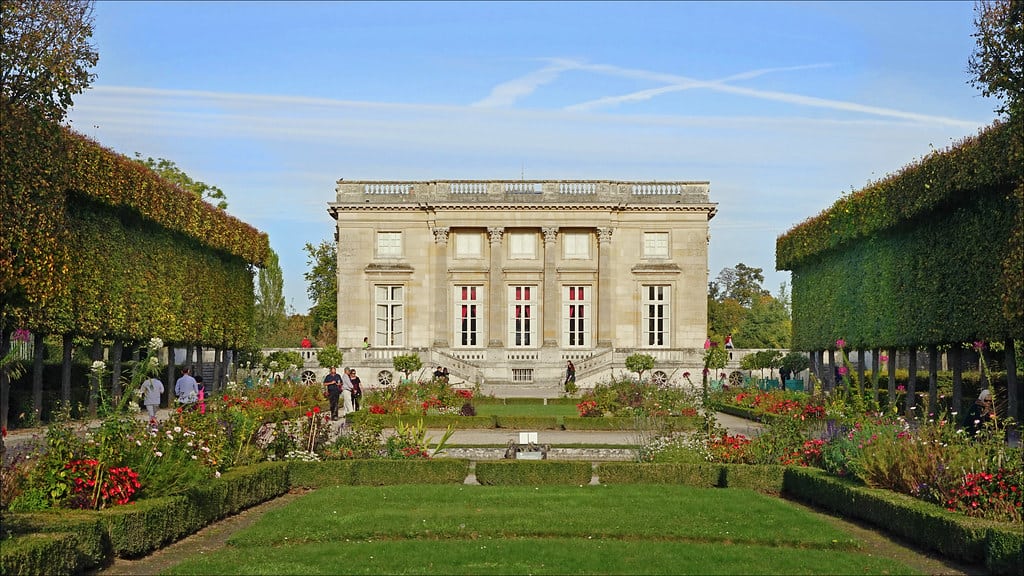
The Petit Trianon is a French chateau built in the neoclassical style that is situated on the grounds of the Versailles palace. Between 1762 and 1768, King Louis XV erected the Petit Trianon as a gift for the king’s mistress and enduring love, Madame de Pompadour. Unfortunately, she died in 1764, four years before the retreat was completed.
She gave her final mistress, Madame du Barry, the palace after it was completed in 1768. She lived there and decorated it until Louis XV died in 1774. When Louis XVI came to power in 1774, he gave control of Petit Trianon and its park to Queen Marie Antoinette, Princess of Austria, who is 19-year-old. She utilised the building as her main house, totally renovating the interiors and grounds to suit her personal tastes, in order to isolate herself from the monarchy’s rigorous lifestyle.
8. Dobroyd Castle (England):
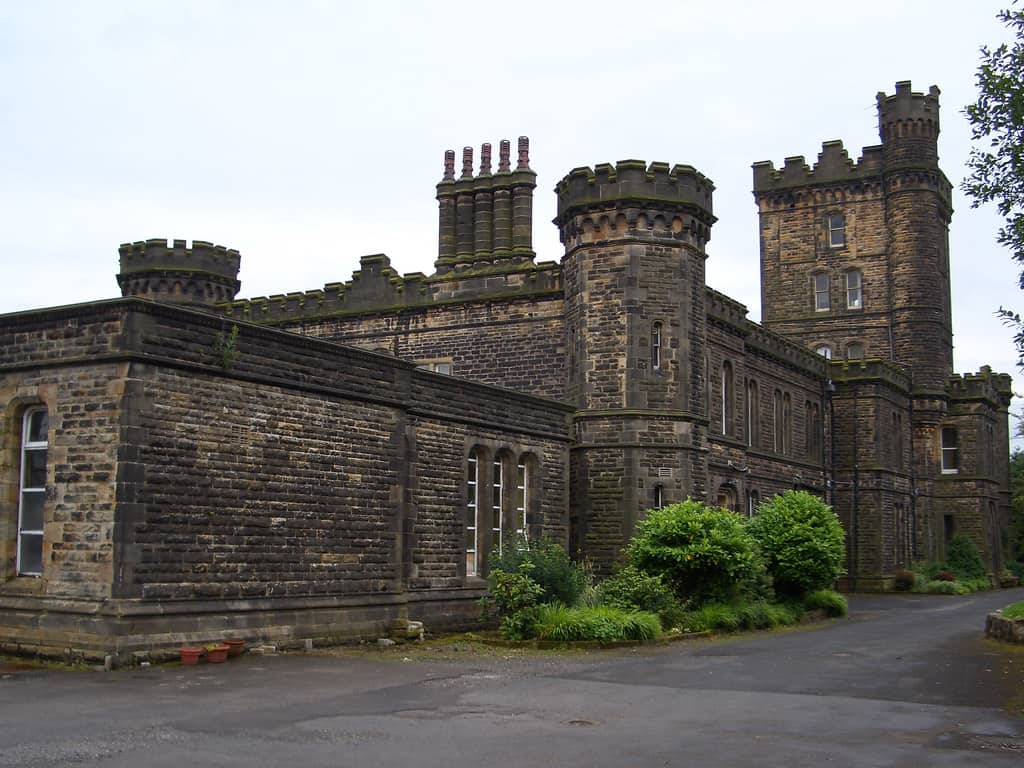
Dobroyd Castle in Todmorden, England, began as a love pledge and evolved into a honeymoon residence. A wealthy mill owner’s son named John Fielden fell in love with Ruth Stansfield, a weaver from the working class. When John proposed marriage, Ruth agreed on the condition that he build a castle for her. After the couple married in 1857, John commissioned famed London architect John Gibson to design and build Dobroyd Castle between 1866 and 1869. He died at the castle in 1893, at the age of 71.
Interesting things to know:
- Dobroyd Castle has 66 elegant rooms, 17 horse stables, four tiny turrets, and a main tower.
- As a testament of their love, the monograms JFR are carved into Devon marble and Caen stone in a dozen locations around the castle.
9. Thornewood Castle (Washington):
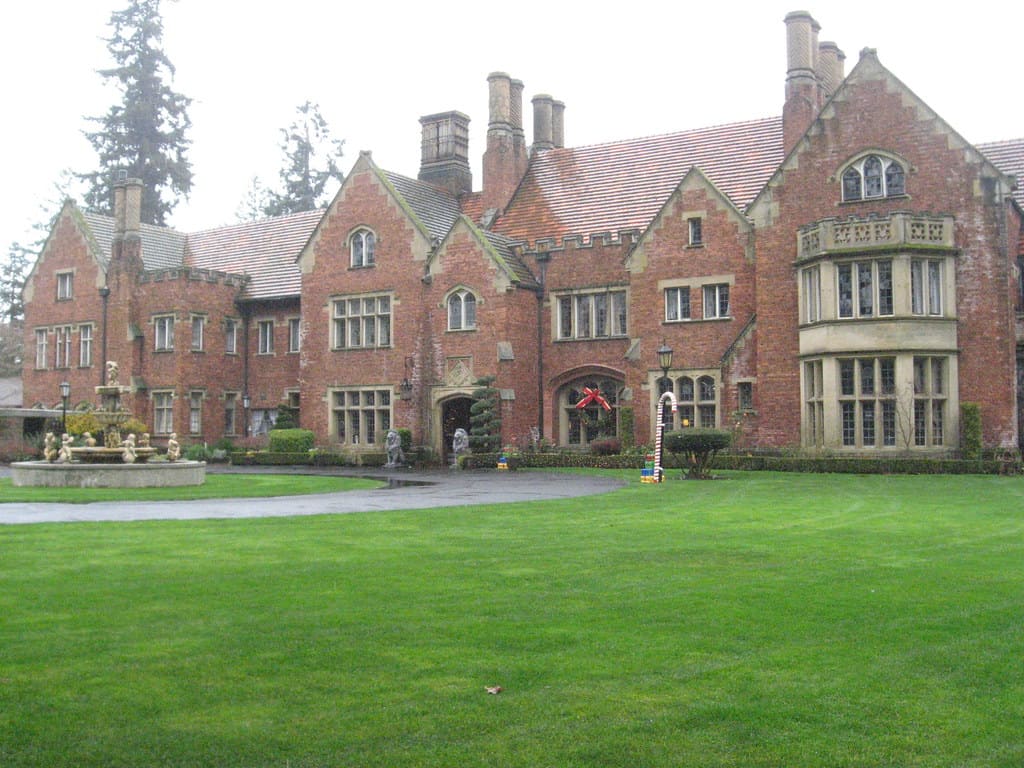
Thornewood Castle, a 500-year-old mansion in Lakewood, Washington, not only has a brief and rich love history, but it is also native to several resident ghosts. Chester Thorne built this magnificent three-storey manor house to provide the best for his domineering wife, Anna, without knowing that it would become among top 10 love monuments.
Interesting things to know:
- Chester Thorne has been one of the Port of Tacoma’s founders. In 1907, a 400-year-old manor named Elizabethan was purchased by him in England. He had it disassembled and shipped to Tacoma. From Cape Horn to the Pacific Northwest, three ships were assigned to transport goods.
- 400-year-old bricks from an original English castle were among the finest materials used in the construction of the manor. The 27,000 square feet castle was completed in 1911 after a four-year construction period. Thornewood Castle is built on a solid foundation of three-foot-thick, 18-inch concrete and cinder floors, 10-inch walls, and custom woodwork from ancient English oak.
- Thorne and Anna worked in collaboration on the manor. Hence, the castle was frequently referred as “the house that love built.” The manor was created by renowned architect Kirkland Cutter, and the stainless glass panels date back to 1300. The crystal windows were made in England. He designed the front door, oak panelling, and oak staircase in Tudor Gothic style, and it is filled with over 100 pieces of stained glass. This mansion has 54 rooms, 28 bedrooms, and 22 bathrooms.
- The 100-acre estate was later converted formal English gardens, requiring the hiring of a full-time staff of 28 gardeners and 40 servants to look after Chester, his wife, Anna, and their daughter Anita. Thornewood’s gardens are breathtaking, and the interiors feature rare illustrations and magnificent interior decoration.
- Anita sold the property in 1959 after Chester died. Before being purchased by the current owners Wayne and Deanna Robinson in 2000, the house was sold a number of times over the following years.
10. Mirabell Palace and Garden (Austria):
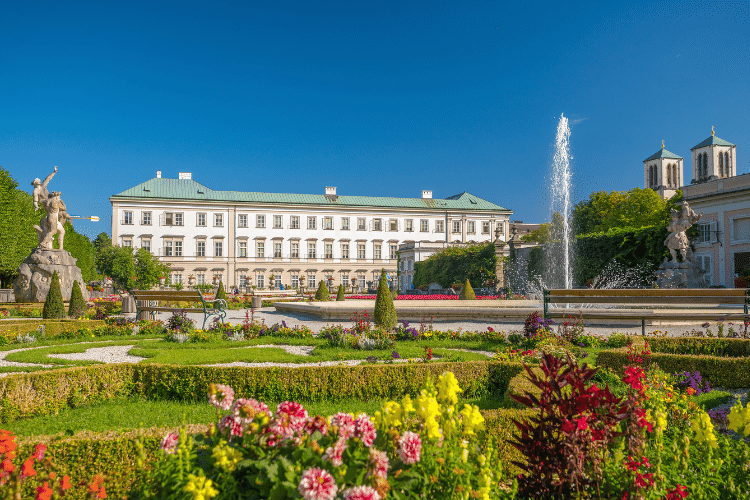
On March 26, 1559, Prince-Archbishop Wolf Dietrich von Raitenau was born in Hofen Castle. He belonged to the von Raitenau nobility. On January 16, 1617, he died in the Fortress of Hohensalzburg.
Wolf attended classes in Pavia and Rome. In 1606, Prince-Archbishop Wolf Dietrich von Raitenau owned the “Altenau” palace (which was later renamed) for his dearly beloved mistress Salome Alt, with whom, he had 15 children.
After his passing, his heir Markus Sitticus von Hohenems retitled the Palace “Mirabell” which taken from the Italian mirabile, which means “admirable,” and bella, which means “beautiful”.
It was located outside of Salzburg’s city walls during this time period. Only after Prince-Archbishop Paris von Lodron had a fresh fort and city wall built to enclose the palace within its city limits. Between 1721 and 1727, Prince-Archbishop Franz Anton von Harrach hired the famous baroque master to transform it into a majestic baroque palace.
Interesting things to know:
- Marble Hall – The “Angel Staircase” that leads up to the Marble Hall is adorned with numerous cherubs. Previously, where Leopold Mozart and his kids, Wolfgang & Nannerl, sang music.
- Dwarf Garden- It was founded during the reign of Archbishop Franz Anton Von Harrach. It was originally made up of 28 dwarves (now reduced to 17) made of white Untersberg marble.
- Palace Chapel- Sanctified to St. Johannes Nepomuk in 1726, church of the Old Catholics since 1921.
- Pegasus Fountain- It was designed by Kaspar Gras of Innsbruck, features a sculpture of pegasus and horse which was installed in 1913.
- Hedge Theater- It is located in the western segment of Mirabell Gardens. It is among the most historic hedge movie theatres.
- Mirabell Gardens- In 1690, archbishop Johann Ernst von Thun completely redesigned the Mirabell Gardens.
- Grand Fountain- Ottavio Mosto created four figures group for the the fountain pool (1690), which represent the four elements: Fire, Air, Earth, and Water.
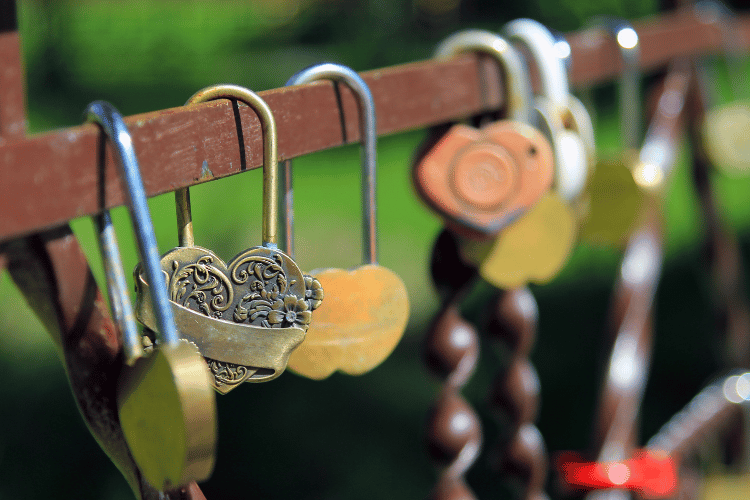
Due to the beauty of love, many monuments and buildings all over the world have been built in its honor. In conclusion, it is worthwhile looking at these top 10 stunning love monuments. And if you’ve taken your love to the next stage, don’t miss out on the honeymoon locations around the world. Don’t forget to comment your favorite.
